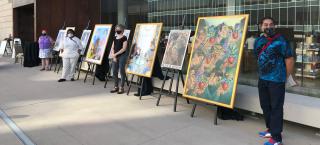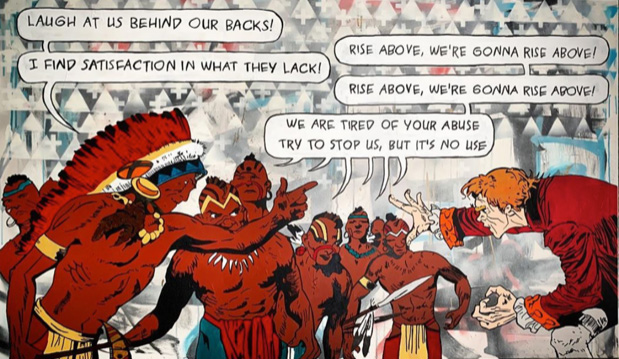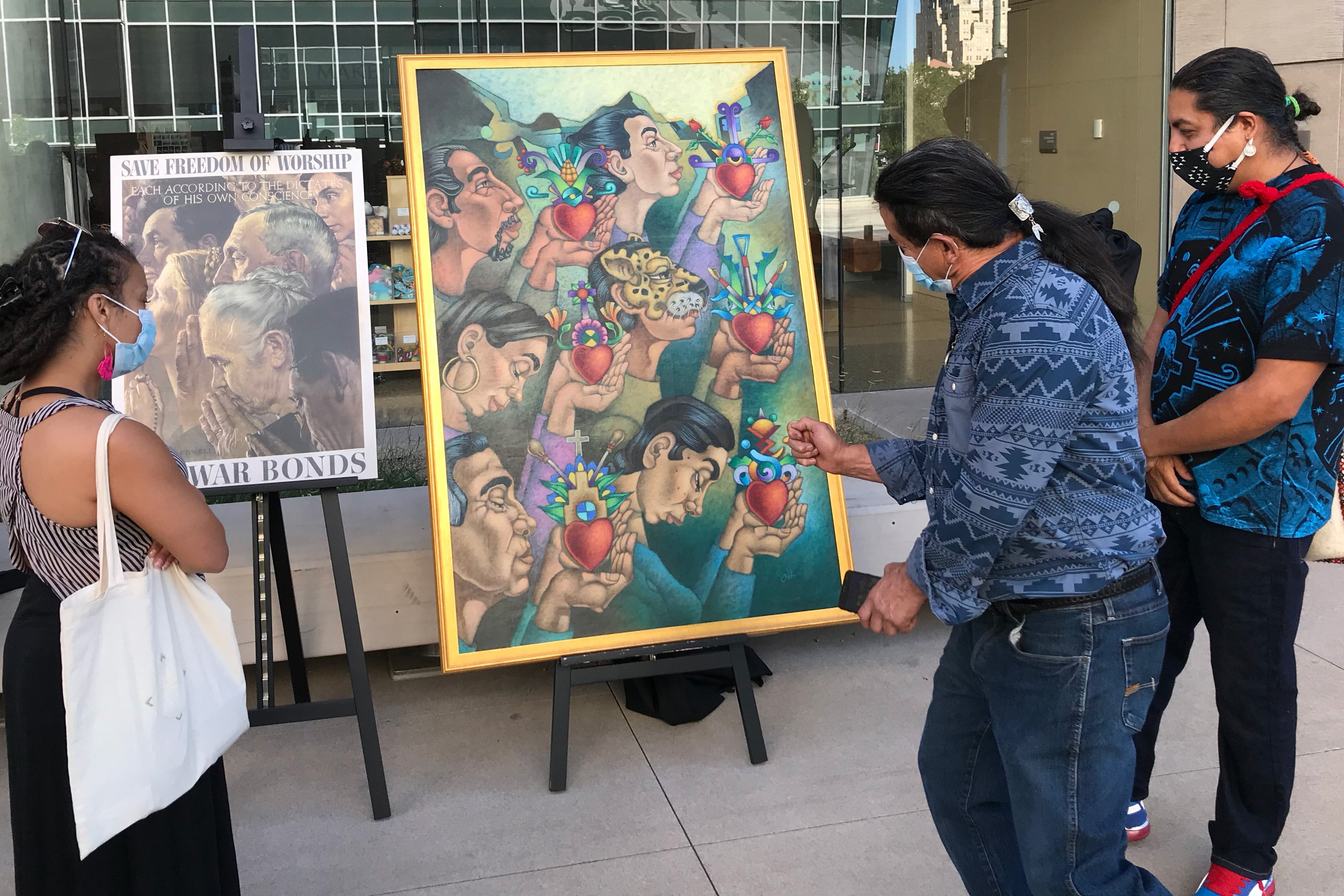
Story
Moments That the Words Don’t Reach
Art and American Democracy
History is full of moments that are unspeakable and impossible to articulate. Art, in its many forms, enables us to get at these moments where words, facts, and intellectualizing cannot reach.
On July 3, I finally joined the ranks of millions of Americans. I succumbed to subscribing to Disney+. And, much more importantly, I finally got to see Hamilton—albeit not live but rather from the cozy comfort of my couch. A beautifully televised Hamilton is one of the silver linings of our pandemic times.
I became an instant and obsessed fan, reading countless blog posts and listening to podcasts about the music and the show—including those that do a boringly robust fact-audit on all aspects of the creative piece. These accountings of the facts miss the point and misunderstand the role of art in transmission of history. The musical itself embodies how art can convey history in ways that are more effective than any textbook, scholar, or (dare I say it) museum exhibit text panel. And not just because art can be more compelling or memorable or toe-tapping or become a song that you hum all day. Art's power is in its ability, as writer Tim O’Brien expressed, to reveal a truth that is “truer than the truth."
Hamilton is abundant with poignant and perfect lyrics, but these are the powerful words I jotted down the first night I saw the show: “There are moments that the words don’t reach.” History is full of moments that are unspeakable and impossible to articulate. Art, in its many forms, enables us to get at these moments where words, facts, and intellectualizing cannot reach. This, of course, is not a new revelation. Rather, it is core to our humanness as evidenced by millennia of our ancestors across the earth using art to transmit history through generations: from storytelling, song, dance, petroglyph, troubadours, and theatre to murals, quilts, hip-hop, and yes, Tony-award-winning Broadway musicals.

Artwork by Gregg Deal (Pyramid Lake Paiute), on view at the History Colorado Center, August 2020-July 2021, and at the Ute Indian Museum, September 2021-January 2022. Courtesy of the artist.
Art plays a significant role in our This Is What Democracy Looks Like initiative—a full roster of exhibits and projects is listed at the end of this article— because there are elements of this large American story that deserve to be told not just with intellectualizing but with the force and emotion that only art can articulate. For example, Indigenous artist Gregg Deal uses punk rock lyrics and re-claimed racist imagery of old Cowboy/Indian comic books to communicate about colonization and genocide in ways that are more impactful than any dissertation on the subject. He has curated a show as part of our initiative, called “Merciless Indian Savages”, which borrows its title directly from the language of the Declaration of Independence.
We have also engaged the talents of four Denver-based artists to re-imagine Norman Rockwell’s Four Freedoms through a contemporary and community lens. We kicked this off in February and throughout this process, I have contemplated the words of Slovenian philosopher Slavoj Zizek: “We feel free because we lack the language to articulate our unfreedom.” In many ways, we also have lost the language to articulate freedom. Memes, bumper sticker philosophers, marketing campaigns, hashtags, policies and practices of power have both underused and overused the word to illustrate everything from french fries and fireworks to ensuring plentiful product choices at the supermarket and disconnecting your cable to less-lethal munitions to casual Fridays and yoga pants. When a single word is defined in ways both big and small, the deepness of its meaning erodes and the word can become hollow. Perhaps, we are in a moment where the words can no longer reach the foundational ideals of freedom. This is why we need art.

Clockwise from upper left: David Ocelotl García's "Freedom of Worship", Cori Redford's "Freedom of Speech", Carmen Richards's "Freedom from Want", and Rochelle Johnson's "Freedom from Fear". These works are on view at the History Colorado Center through January 3, 2021.
When we reached out to these Four Freedoms artists, we asked them to use their talents to create visual articulation of our large collective hopes and ideals for freedom. In our current times and postmodern paradigms, it can be easy to approach projects like this with satire and snark or as easy Twitter fodder in our deliberately divided country. But, we were seeking art that is simultaneously a contemporary reimagining and also reaches beyond our current moment. Despair, dismay and skepticism are more easily attained modes of being in our volatile times, but art can push us towards more. If you think about it, creativity is a condition of freedom. If we can't imagine our liberation, no policies or elected officials can make it so. But, art motivates us at a soul level, catalyzes our imaginations, and helps us envision and create a world where we can be free.
The Art of Democracy at the History Colorado Center
Hecho en Colorado, through January 10, 2021
Adri Norris: Women Behaving Badly, July 23, 2020–February 2021
The New Four Freedoms, August 7, 2020–January 3, 2021
Gregg Deal (Pyramid Lake Paiute): “Merciless Indian Savages”, August 14, 2020–July 2021
Rian Kerrane: We the People + Gina Klawitter: All the Way to Freedom + Ki’erre Dawkins, Aisha Renee, Leticia Tanguma: Community Mural Project, September 12, 2020–January 3, 2021
Also in Denver
Norman Rockwell: Imagining Freedom, Denver Art Museum, through September 7
Nari Ward: We the People, MCA Denver, through September 20
Citizenship: A Practice of Society, MCA Denver, opening October 2

